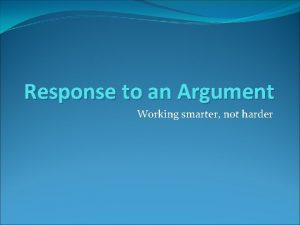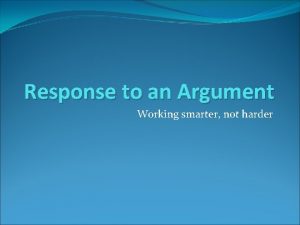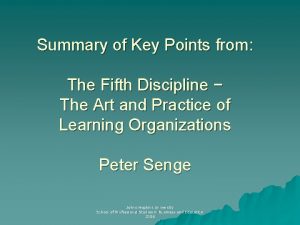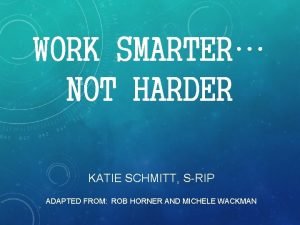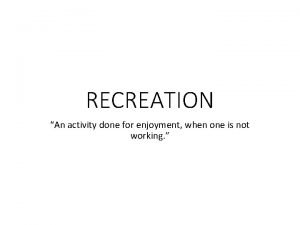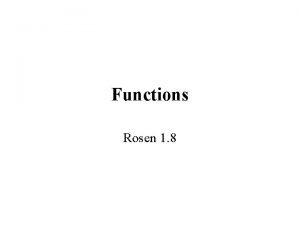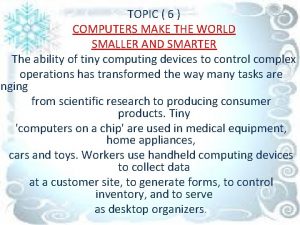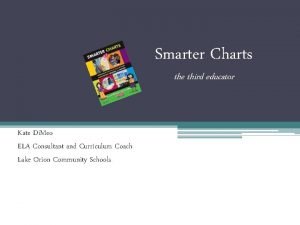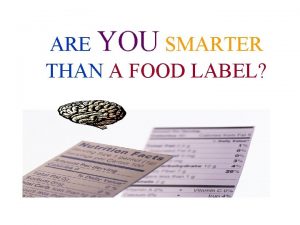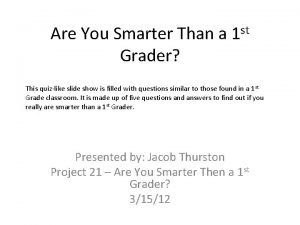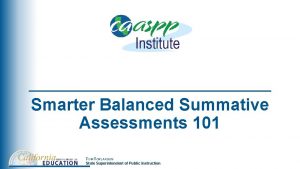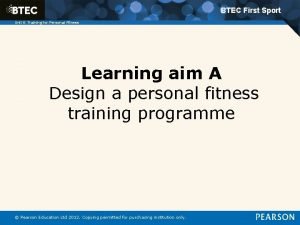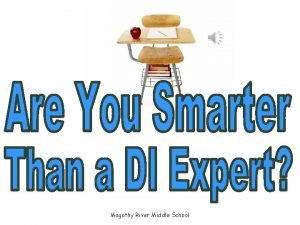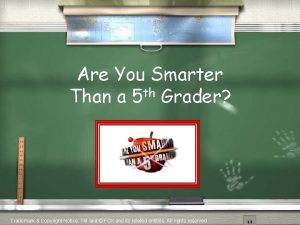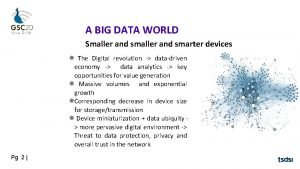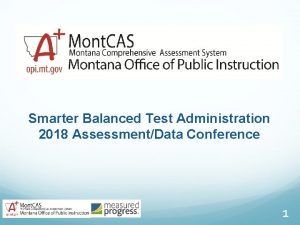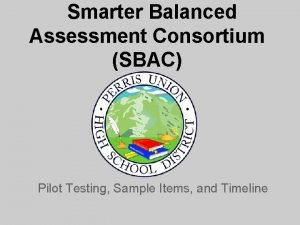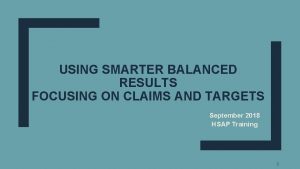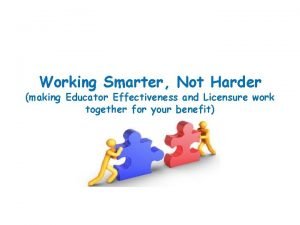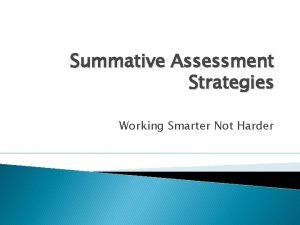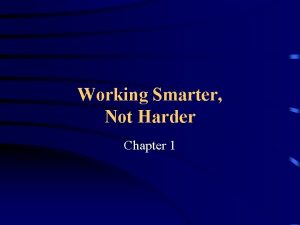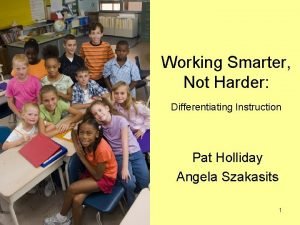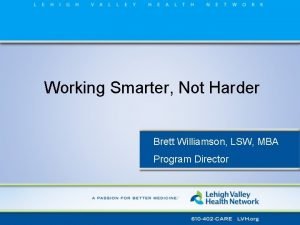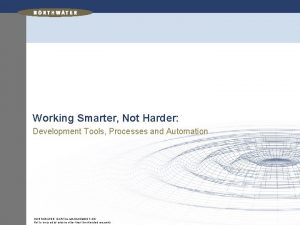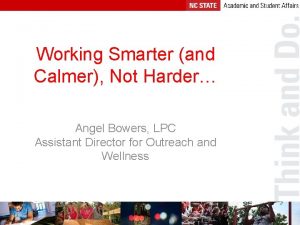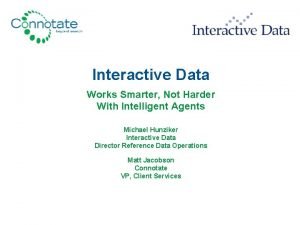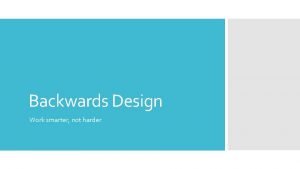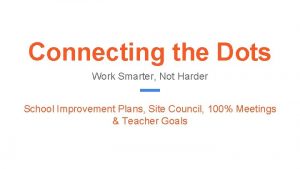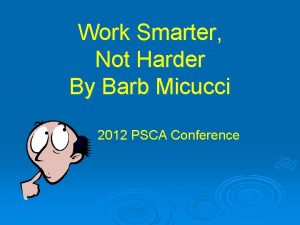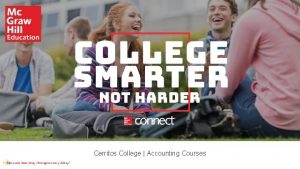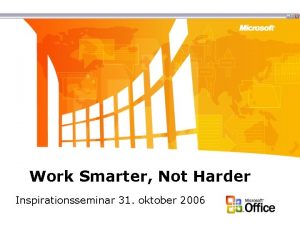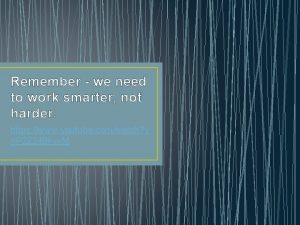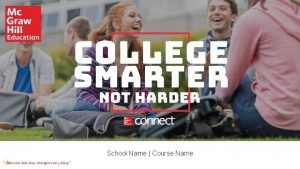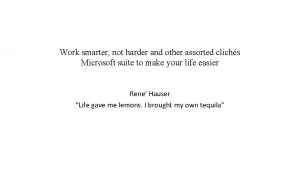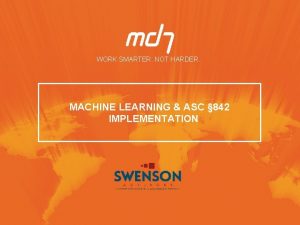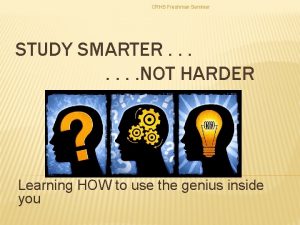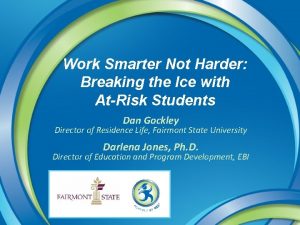Working Smarter not Harder Making a Difference One


































- Slides: 34

Working Smarter not Harder: Making a Difference One Teacher at a Time Larry Maheady, Ph. D Exceptional Education Department SUNY Buffalo State maheadlj@buffalostate. edu June 20, 2018 A presentation for the Georgia HLP/MTSS Summit, Middle Georgia State University, Macon, Georgia

Session Goals • Address commonly asked question from teachers & leaders • What can I do to improve student learning in my classroom(s) right now? • Describe three easy-to-use teaching practices that consistently improve student outcomes • Share evidence to support effectiveness from a variety of settings

What can I do to improve student learning in my classroom right now?

Challenges of Group Instruction • Group instruction, large & small, is most common teaching arrangement at Tier I & II levels • Five instructional challenges • • • Maintain attention Give students equal opportunities to respond Provide individualized feedback Monitor student learning Prevent & deal with disruption • So challenging that if students just pay attention & aren’t disruptive, we feel successful

Case Overview • Two Important Student Outcomes • Active student engagement during group instruction • Academic productivity (in class & homework) • Three “Low Tech” Practices • Response cards • Numbered Heads Together • Three Jars

Active Student Engagement (ASE) • ASE is critical to academic achievement (Hattie, 2009; Heward & Wood, 2015); (oral reading, writing, discussing, solving math problems versus listening and watching) • Some students (average & high performers) are easier to engage than others (low performers) during group instruction • Some existing practices may be widening achievement gaps in our classrooms

RESPONSE CARDS

Questions ? • If you are leading lesson & direct questions to whole class, what percentage of students would raise hands to respond? What % of HRs would be average or above average achievers? Low achievers? What are the long-term consequences of these response patterns?

Amy’s Class • Students & settings • 22, 4 th graders in small, urban setting • 12 Cau. 6 AA, 4 His. • 88% free & reduced meals • Problem • Low rates of active class participation • Poor performance on math quizzes • Goals • Get more students to participate • Improve math quiz scores on district-adopted measures

100% 90% Percent correct 80% 70% 60% Is a class average of 71% correct acceptable? Why or why not? 50% 40% 30% What will class average be next week, two weeks, or two months from now, if instruction stays the same? 20% 10% 0% 1 2 3 4 Sessions 5 6

Baseline 100% Response cards 90% Percent Correct 80% Mean = 89% 70% 60% Mean = 71% 50% Was that amount of change important? Why or why not? 40% 30% How did math scores change? 20% What decision would you make about using Response Cards? 10% 0% 1 2 3 4 5 6 7 Sessions 8 9 10 11 12

100% Baseline Response Cards Baseline 90% Percent Correct 80% 70% M = 89% 60% M = 76% M = 72% 50% 40% 30% 20% 10% 0% 1 2 3 4 5 6 7 8 Sessions 9 10 11 12 13 14 15

100% 90% Percent Correct 80% 70% M = 89% 60% 50% M = 76% M = 71% 40% M = 88% 30% 20% 10% 0% 1 2 3 4 5 6 7 8 9 10 11 12 13 14 15 16 17 18 19 20 21 22 Sessions

Pseudonyms Baseline Average Response Cards Average Gain Scores Jim* 60 85 +25 Shanequa 73 92 +19 Luis 82 88 +6 Sara 87 100 +13 Miguel 73 97 +24 Hayden 82 97 +15 Teoscar 95 100 +5 Didi 80 88 +8 Jasmine 67 88 +21 Ralph 60 83 +23 Kim* 56 85 +29 Tom 75 97 +22 Angelica 88 92 +4 La. Tesha 88 100 +12 Ivory 87 97 +10 Total 77 93 +16 How did individuals do baseline vs RC? How did highest performer do? How did lowest performer do? Use, adapt, or discard?

Best Available Evidence • 23 studies in math, social studies, & science (Randolph, 2007) • Pupils make about 15 times more active responses per class versus hand-raising • 75 Xs per week • 300 Xs per month • 2, 700 Xs per year • Student quiz scores were 1. 5 letter grades higher & disruptive behavior decreased by 40% • Most students prefer RC over traditional methods

Game-based learning platform (Norway); multiple-choice quizzes; use with any age, grade, or skill levels, & subject matters; & any device with internet connection & web browser

NUMBERED HEADS TOGETHER

Kagan Structures • developed in the 1970 s by Spencer Kagan • “easy-to-use” structures that involve cooperative goals & rewards • 4 primary types of structures • mastery • thinking skill • information sharing • communication

Student Assignment to Teams 1 13 2 14 3 15 11 23 10 22 12 24 4 16 5 17 6 18 9 21 8 20 7 19

NHT Procedures • Step 1. Students sit in small groups w/numbers • Step 2. Teacher asks questions, provides think time, & students privately write answers on white boards • Step 3. Students put heads together (show & discuss answers) teach as necessary • Step 4. Teacher calls random number (1 to 4) & students with number answer simultaneously • Step 5. Classmates applaud students who responded

Cindy’s Class • Students & Setting • • • 9 th grade biology class in small urban, low SES setting 26 year veteran teacher with training in Kagan structures 18 students (13 F, 5 M) 9 His. 7 Cau. 2 AA 1 students with IEP, 3 ELLs • Problem • Poor performance on new “challenging” science content • Low class participation • Pupil Outcomes • Percent correct on weekly science quizzes taken online using i. Pads • Interventions • Hand Raising vs. Numbered Heads Together (NHT)

Baseline NHT Percent Correct Heads Together 1 2 3 4 5 6 7 8 9 Weeks 10 11 12 13 14 15 16 17

Students Baseline M NHT M Gain Scores A 38 52 +14 B 37 71 +34 C 48 53 +5 D 57 73 +16 E 55 90 +35 F 43 53 +10 G 78 96 +18 H 78 84 +6 I 90 98 +8 K 83 88 +5 L 37 46 +9 M 44 73 +29 N/O 56/60 71/74 +15/+14 P/Q 43/23 73/63 +30/+40

THREE JARS

Target Behavior Target students & Criteria What? Contingent Rewards Who? Wow!

7 th Grade Math Inclusion Class •

Work = tion e l p m Co 95% WHAT? What outcomes/behaviors would you like to improve? uracy c c A k r o W = 90% n= o i t e l p m Co 100% y= c a r u c c A 80% Work n= o i t e l p m Co 80% = y c a r u c Ac 85%

Interdependent group contingencies: All group members are rewarded based upon their collective performance (Litow & Pumroy, 1975) Entire class WHO ? Row 1 Chris Row 2 Ashley Row 3 Lauretta Dependent group contingencies: All group members rewarded based on performance of one or few rmembers

What are some preferred items and activities for your students? WOW! 5 m in ea dism rly issa l Tea dres cher ses u p! No wor dots k N hom o ewo coup rk on Mys Mot tery ivat or P

M =. 64 C M =. 59 A M =. 65 C M =. 64 A M =. 95 Completion M =. 86 Accuracy

Students Baseline Average Correct Three Jars Game Average Correct Gain Scores A* 51 81 +30 B* 47 76 +29 C* 51 88 +37 D 71 92 +21 E* 61 87 +27 F 67 90 +23 G* 40 . 79 +39 H 68 82 +14 I* 11 83 +72 K* 32 70 +38 L* 84 97 +13 M* 87 99 +12 N 79 95 +16 O 76 87 +11 P 82 96 +14 Q 63 84 +21

Closing The Gap Percent Completion Percent Correct 100 90 90 80 80 70 70 60 60 50 50 40 40 30 30 20 10 Students without IEPs Students with IEPs 0 Baseline Intervention

Takeaways • Students do well when teachers use effective practices. • These practices are used infrequently and by too few practitioners. • Teachers need good PD & support to use these practices well. • Avoid politics of distraction (e. g. , class size, vouchers, charter schools, grade retention, & summer school)

References • Hattie, J. (2009). Visible learning: A synthesis of over 800 meta-analyses relating to achievement. New York: Taylor & Francis. • Kagan, S. (2010). Cooperative learning. San Juan Capistrano, CA: Kagan Resources Inc. • Randolph, J. J. (2007). A quantitative synthesis of response card research on student participation, academic achievement, classroom disruptive behavior, and student preferences. Journal of Positive Behavioral Interventions, 9, 113128. • Rhode, G. , Jenson, W. R. , & Reavis, H. K. (2010). The tough kid book (2 nd. Ed. ). Eugene, OR: Pacific Northwest Publishing.
 Work smarter, not harder essay
Work smarter, not harder essay Work smarter not harder passage
Work smarter not harder passage The harder you push the harder the system pushes back
The harder you push the harder the system pushes back Working smarter matrix
Working smarter matrix Making smart contracts smarter
Making smart contracts smarter Hot working and cold working difference
Hot working and cold working difference Is an activity done for enjoyment when one is not working
Is an activity done for enjoyment when one is not working Hard work vs smart work
Hard work vs smart work Cold working advantages
Cold working advantages Machining operations
Machining operations Proses hot working
Proses hot working Not genuine, not true, not valid
Not genuine, not true, not valid One one onto function
One one onto function Computer make the world smaller and smarter
Computer make the world smaller and smarter Smarter vision cable
Smarter vision cable Smarter charts
Smarter charts Smarter 2030
Smarter 2030 Ibm smarter planet case study
Ibm smarter planet case study Are you smarter than a food label
Are you smarter than a food label Are you smarter than sam questions
Are you smarter than sam questions Ibm global supply chain management
Ibm global supply chain management Official smarter balanced summative assessment
Official smarter balanced summative assessment Ulrich pluta
Ulrich pluta Smarter btec sport
Smarter btec sport Magothy river middle school
Magothy river middle school Are you smarter than a 5th grader lyrics
Are you smarter than a 5th grader lyrics Computers make the world smaller and smarter
Computers make the world smaller and smarter Montana sbac secure browser
Montana sbac secure browser Smarter balanced.org
Smarter balanced.org Smarter balanced sample items
Smarter balanced sample items Smarterbalanced.alohahsap.org
Smarterbalanced.alohahsap.org Smarter inventories
Smarter inventories One god one empire one emperor
One god one empire one emperor Little dog run
Little dog run One king one law one faith
One king one law one faith
